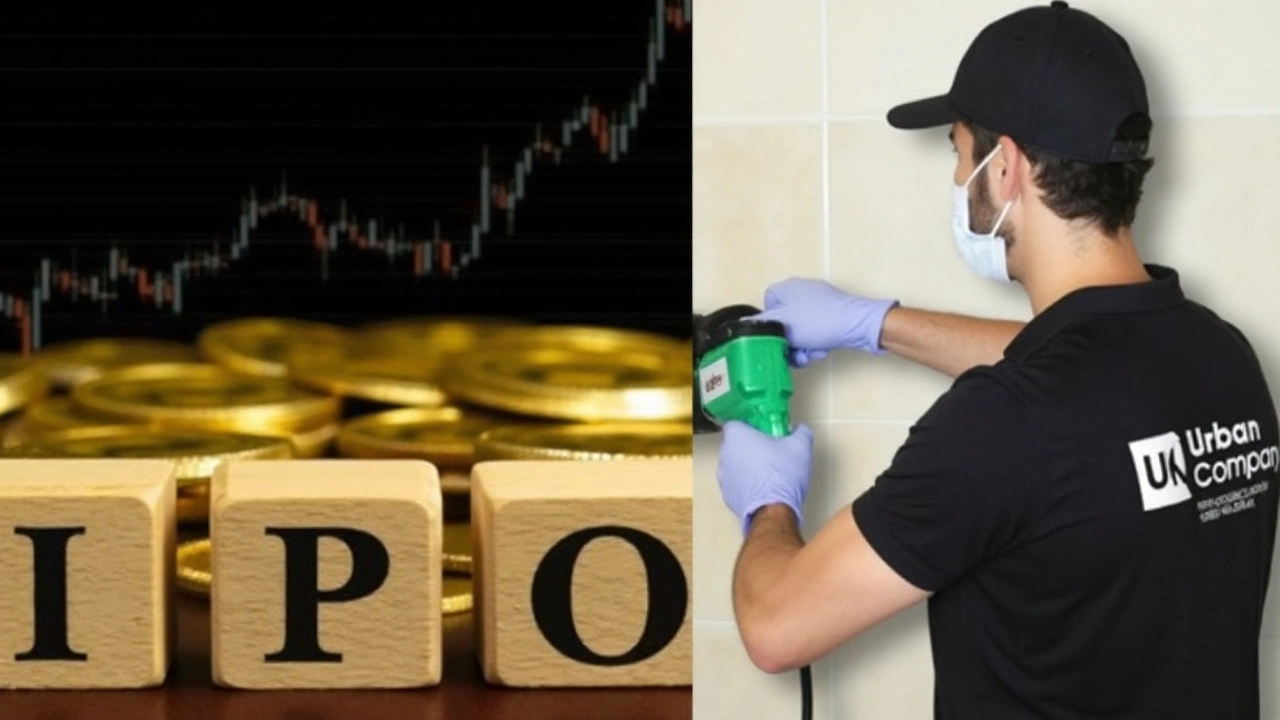Urban Company IPO frenzy: 300% subscription, 34% GMP jump, profit swings on tax credit

By Aarav
The Urban Company IPO has turned into a spectacle. By the second day of bidding, the issue was subscribed more than three times, and the grey market premium rose about 34%—a sign that traders expect solid listing-day gains. The offer, open from September 10 to 12, 2025, seeks to raise ₹1,900 crore at a price band of ₹98–103 per share.
What’s driving the frenzy
Two things are pulling investors in: a swing to profit and a market that still feels under-served. Urban Company, a tech-led marketplace for at-home services like beauty, cleaning, appliance repair, and salon treatments, reported a ₹240 crore profit after tax in FY25. That’s a dramatic turn from a ₹93 crore loss in FY24 and years of red ink before that. The fine print matters though: most of that profit came from a one-time deferred tax credit of ₹211 crore. Strip that out, and pre-tax profit sits at ₹28 crore. It’s a break-even year more than a breakout year, but after persistent losses, even that matters.
Topline growth has stayed strong. Revenue climbed from ₹637 crore in FY23 to ₹1,144 crore in FY25. Management and bankers are pitching a home services market in India that’s still early, with a domestic opportunity pegged near $60 billion. Urban Company’s bet is that a trusted brand, verified professionals, standardized pricing, and faster fulfillment can keep pulling customers away from informal, offline providers.
The IPO itself is a mix of fresh capital and a large secondary sale. About ₹472 crore is fresh issuance; ₹1,428 crore is an offer for sale by existing shareholders. The company plans to put the new money into product and tech development, cloud infrastructure, office leases, marketing, and general corporate use. Translation: more engineering muscle, better routing and matching, and a push to defend the brand in key cities.
What’s the draw beyond the headline numbers? Urban Company’s hyperlocal playbook is built around micro-markets—tighter service zones that reduce travel time and raise completion rates. The platform uses AI and machine learning to match demand and supply in real time, balance peak loads, and nudge pricing during rush hours. For a services marketplace, small cuts in travel time and better matching often add up to real gains in customer satisfaction and partner earnings.
There’s also momentum. Net Transaction Value and revenue, taken together, have grown at a healthy clip, with management guiding to around 25.5% CAGR between FY23 and FY25. That pace, combined with improving unit discipline, is what’s powering the optimism you see in the order book and the grey market.
- Issue size: ₹1,900 crore
- Price band: ₹98–103 per share
- Structure: ₹472 crore fresh issue + ₹1,428 crore OFS
- FY25 PAT: ₹240 crore (includes ₹211 crore deferred tax credit)
- FY25 revenue: ₹1,144 crore
- Valuation at upper band: ~₹14,800 crore market cap
- Implied ratios: P/E ~65.7x on FY25 earnings, P/S ~12.9x
Those valuation markers tell their own story. A P/E based on a one-time tax credit flatters the multiple. If you look at profit before that credit, the P/E jumps sharply and becomes less useful as a gauge. The cleaner way to think about it right now is P/S and how fast revenue, take rates, and repeat usage can lift margins over the next 6–8 quarters.
Valuation, risks, and what to watch
At the top end of the band, Urban Company’s market cap works out to roughly ₹14,800 crore. That’s not cheap for a company that only just nudged into the black. The justification is the category: a large, underpenetrated services market where a single brand can compound for years if it gets frequency and retention right. The counterpoint is execution risk and the cost of holding the lead.
The company’s operating model leans on a vast pool of gig workers—around 70% of the workforce by the company’s own mix. That brings nimbleness, but also regulatory overhang. India’s labor rules for platform work are evolving, and changes in benefits, insurance, or minimum pay standards can move unit economics quickly. Urban Company has been building training, safety, and insurance layers to reduce churn and raise quality, but any rule change that shifts costs to the platform will need to be offset through pricing or higher efficiency.
Marketing spend remains heavy. The company spent ₹207 crore on marketing in the latest year, a reminder that customer acquisition in this space isn’t cheap. The bull case says that as the brand entrenches, repeat use and referrals push down acquisition costs per order. The bear case says competition from offline providers and smaller online platforms keeps discounts and ad spend elevated.
Competition is messy in services. It’s not just other apps; it’s neighborhood salons, appliance repair shops, and independent contractors who know the local area well. Urban Company’s edge is standardization and trust—verified professionals, ratings, guaranteed service, and predictable pricing. Whether that moat stays wide depends on how much value partners feel they get on the platform versus off-platform work.
Investors should also be realistic about the grey market premium. GMP is an informal signal, not a guarantee. It swings with sentiment and supply of shares in the unlisted market and can fade quickly if broader markets turn risk-off or if listing day sees heavy profit taking.
- Profit quality: How much of FY26 profit comes from core operations, not one-offs?
- Cohort strength: Are repeat rates and order frequency rising across older cohorts?
- Unit economics: Contribution margin after all direct costs, including promotions and support.
- Partner health: Earnings per active partner, churn, and satisfaction scores.
- Regulation: Any movement on gig worker rules that could change costs or liabilities.
- Cash discipline: Path to sustained positive operating cash flow.
Brokerage views are cautious but constructive. Several analysts call Urban Company a category leader with long runway, while warning that the issue looks fully priced at the top band. SBI Securities Research has a subscribe rating with a long-term lens, advising investors who can handle volatility to hold through cycles rather than chase day-one gains.
Bottom line for prospective investors: this is a growth story with improving fundamentals, not a deep-value play. The market is signaling confidence in the brand and the model. The next leg of returns will depend on steady execution—better matching, smarter marketing, rising partner productivity, and clean profits without the help of tax credits.




